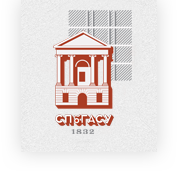Semiotic Transformation in Translation: A Case Study of the Film Forrest Gump
DOI:
https://doi.org/10.63313/LHP.8017Keywords:
Forrest gump, semiotic transformation, informational conversion, formal conversion, cultural conversionAbstract
This paper examines the issue of semiotic transformation in translation through a case study of the film Forrest Gump. By analyzing three key objects of semiotic conversion, including informational, formal, and cultural elements, the study highlights the crucial role of semiotic transformation in the translation process. Understanding these diverse semiotic conversions enables translators to identify potential obstacles in practical translation work and facilitates the discovery of appropriate target-language expressions, thereby enhancing both fluency and accuracy in translation. Furthermore, these multidimensional semiotic transformations have contributed to the creative reinterpretation of this classic literary work within the audiovisual semiotic system.
References
[1] 冯全功.翻译是一种符号转换活动——关于翻译定义的若干思考[J].中国翻译,2022,(03):11-19+191.
[2] 李蕾.像一片洁白的羽毛——浅谈电影《阿甘正传》的配乐[J].电影文学,2008(24):117.
[3] 沈渭菊,段慧敏.《阿甘正传》专有名词典故的字幕翻译[J].兰州交通大学学报,2018,(01):125-131.
[4] 许钧.翻译概论[M].北京:外语教学与研究出版社,2020.
[5] 许钧.关于新时期翻译与翻译问题的思考[J].中国翻译,2015,(03):8-9.
Downloads
Published
Issue
Section
License
Copyright (c) 2025 by author(s) and Erytis Publishing Limited.

This work is licensed under a Creative Commons Attribution-ShareAlike 4.0 International License.















